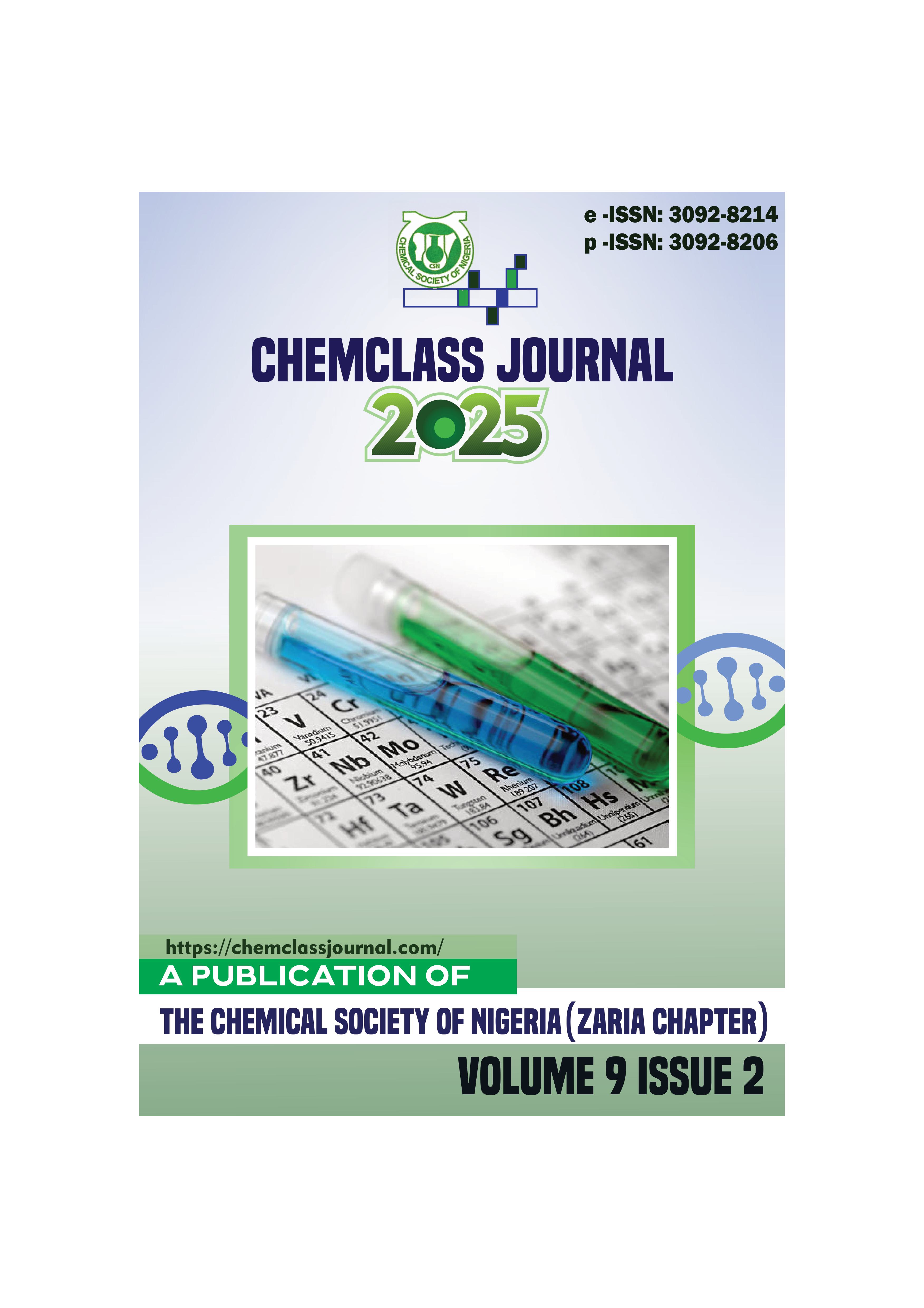Geochemical Characteristics of Gully Impacted Soils in Southeast Nigeria
DOI:
https://doi.org/10.33003/chemclas-2025-0902/172Keywords:
Gully erosion , Southeast Nigeria , Soil geochemistry , Heavy metals , Erosion susceptibility , Mineralogical compositionAbstract
Gully erosion remains a critical environmental issue in Southeast Nigeria, threatening land productivity,
infrastructure, and ecological balance. This study investigates the geochemical characteristics of gully
impacted soils in order to identify the underlying factors contributing to erosion susceptibility and to inform
effective mitigation strategies. Soil samples were collected from three erosion-prone states—Imo, Abia,
and Anambra—representing Southeast Nigeria, while control samples were obtained from the three
senatorial districts of Rivers State, a relatively stable area. Heavy metal analysis revealed elevated
concentrations of manganese (Mn) and nickel (Ni) in the gully-affected soils, with values reaching 46.05
mg/kg and 15.71 mg/kg, respectively—significantly higher than those found in the control. Conversely, the
control soils exhibited higher levels of iron (Fe), lead (Pb), copper (Cu), and zinc (Zn), which are essential
for plant growth, microbial activity, and soil structural integrity. Notably, cadmium (Cd) and arsenic (As)
were present in all test samples, but undetected in the control, highlighting potential toxicity concerns.
Mineralogical analysis using X-ray diffraction identified quartz, albite, orthoclase, and vermiculite as the
dominant minerals. Quartz appeared in 10 samples (9.90–96.00%), albite in 9 samples (0.80–13.00%),
orthoclase in 6 (0.30–23.00%), and vermiculite in 3 (0.07–5.00%). The control soils were characterized to
be predominantly coarse, erosion-resistant minerals—such as quartz and orthoclase—which enhance
structural resilience. The findings suggest that both heavy metal contamination and mineral composition
significantly influence soil stability and erosion potential. It is recommended that policymakers and land
managers adopt soil-specific management strategies, including integrated conservation practices, to
mitigate erosion and promote sustainable land use in Southeast Nigeria





 ChemClass Journal
ChemClass Journal
